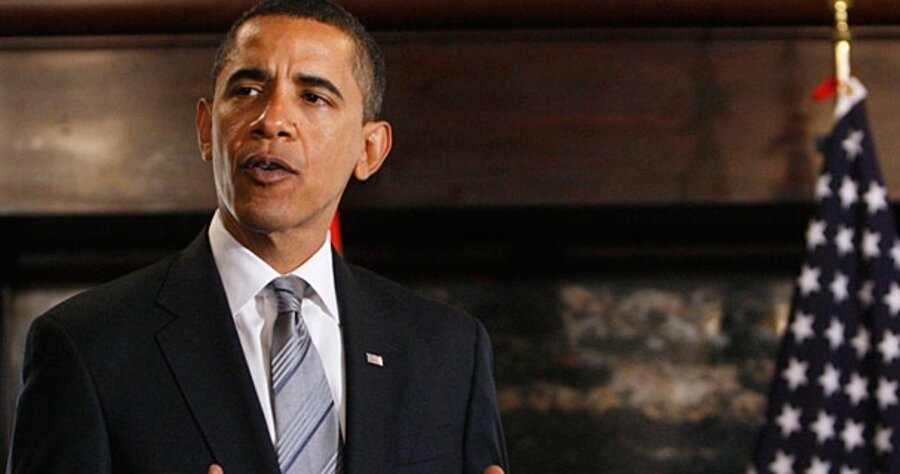Obama pushes to redirect bailout
Loading...
| Washington
Coming soon to the US Treasury: a financial rescue effort that’s closely controlled by government regulators and is aimed at homeowners, small businesses, and auto buyers, as well as banks.
That’s what incoming Obama administration officials are telling Congress, anyway, as they push for lawmakers to release the second half of the $700 billion bailout fund approved in October. In essence, the Obama team is trying to reboot and rebrand an effort that many Democrats have criticized as too secretive and too focused on helping Wall Street.
Critics of the way the bailout has been run so far “want to make sure the money gets to people and does something,” says Connel Fullenkamp, an associate professor of economics at Duke University in Durham, N.C.
On Jan. 12, on behalf of President-elect Obama, President Bush asked Congress for access to the remaining $350 billion of the cash lawmakers authorized for the Troubled Asset Relief Program (TARP). It indicates that Mr. Obama may be worried about more trouble in US credit markets.
“It is clear that the financial system, although improved from where it was in September, is still fragile,” Obama said Jan. 12.
But approval to get the cash isn’t a foregone conclusion. In the House of Representatives, for instance, Rep. Barney Frank (D) of Massachusetts, chairman of the Financial Services Committee, has introduced a bill to impose oversight restrictions on the bailout fund and to require that at least $40 billion be used for preventing home foreclosures. That legislation might have to pass before TARP funds are released, say some lawmakers.
Representative Frank’s conditions mirror things that Obama has said he will do. Incoming White House economic adviser Lawrence Summers sent lawmakers a letter this week that pledged the Obama administration will lay “tough and transparent conditions” on firms that get taxpayer cash. Obama will use TARP to help “reduce mortgage payments for economically stressed but responsible homeowners,” wrote Mr. Summers.
That is all well and good, but Frank is not satisfied.
“Many of us have a great deal of confidence in the Obama administration, but I am prepared here to draw on the wisdom of a previous Republican president: We will trust but verify,” said Frank at a Jan. 9 hearing, echoing a phrase Ronald Reagan used when describing superpower arms treaties.
From the first, Treasury Secretary Henry Paulson and other Bush administration officials said their top priority for TARP was saving the US financial system. To them, this meant saving the institutions that make up that system.
The Treasury has, under a capital investment program, injected $189 billion in 257 financial institutions around the country, Neel Kashkari, assistant secretary of the Treasury for financial stability, said Tuesday in a speech at Georgetown University.
Add in TARP funds separately allocated to insurance giant AIG and to Citigroup, and the amount committed so far nears about $330 billion. Add the $19 billion pledged to Detroit automakers on top of that, and the Bush administration now has just about spent the first $350 billion of the rescue fund’s $700 billion total.
The Treasury Department now is developing tools to measure whether banks that took TARP money in fact are increasing lending, Mr. Kashkari said. But to critics, that effort comes too little, too late, as the Bush administration has handed out money to banks without requiring how the funds be used.
“We have to put strings on the TARP,” says Peter Morici, an economist at the University of Maryland.
What the Obama team should do is require that financial firms refocus on the securitization market, says Dr. Morici. The flow of mortgages, credit-card debt, student loans, and other consumer loans packaged into securities and sold by banks to long-term investors is clogged, he says, and must be restarted.
Duke’s Dr. Fullenkamp agrees that the credit system remains clogged. But to free up lending, he says, the Obama administration should return to the Treasury’s original bailout idea and buy toxic mortgage-based assets from financial institutions. More direct government involvement would be a mistake, he says.
In the Senate, majority leader Harry Reid said he was encouraged by Obama’s efforts to require greater accountability for use of TARP funds. Minority leader Mitch McConnell was skeptical, but left open the possibility that he could be persuaded.





